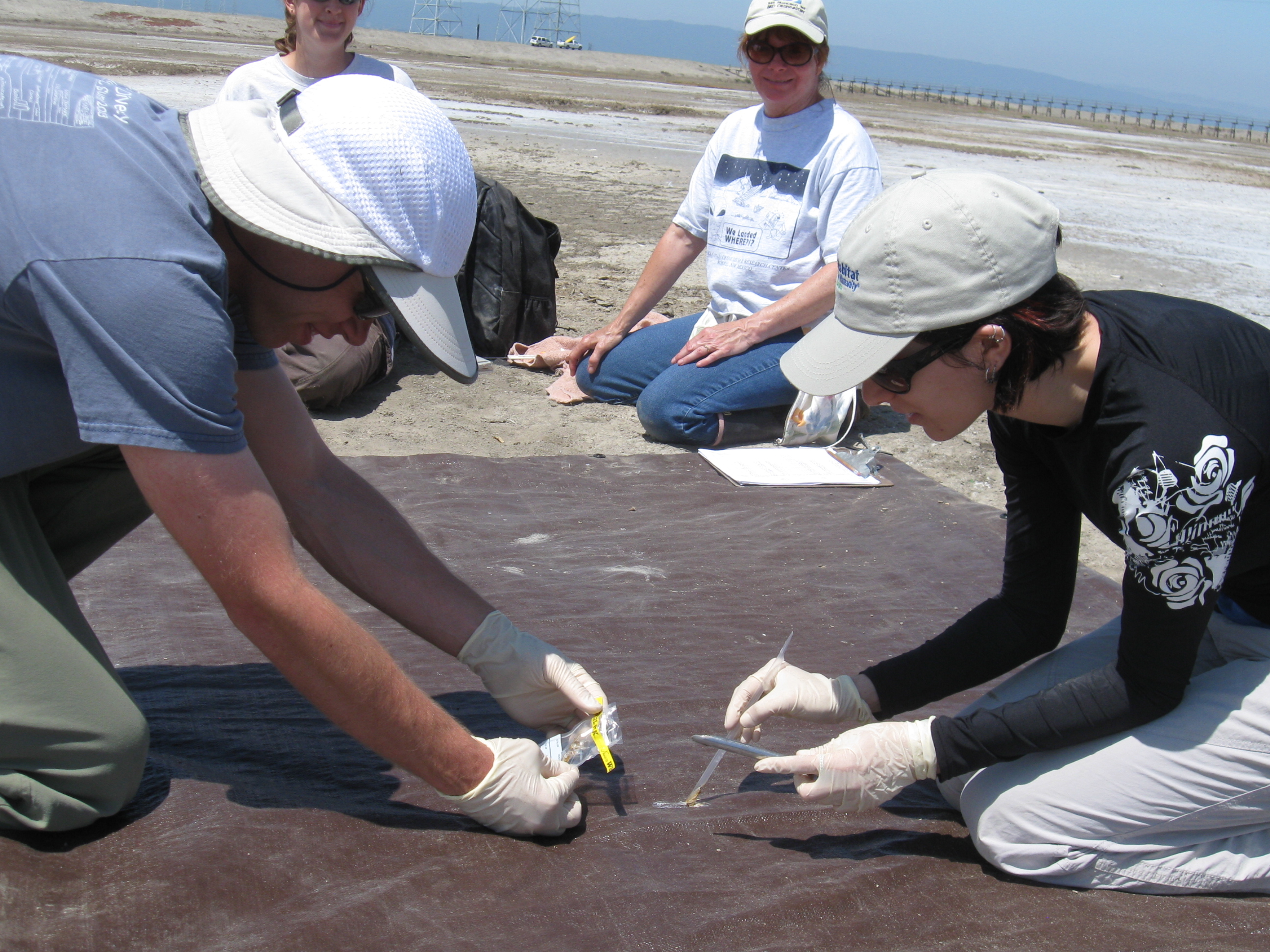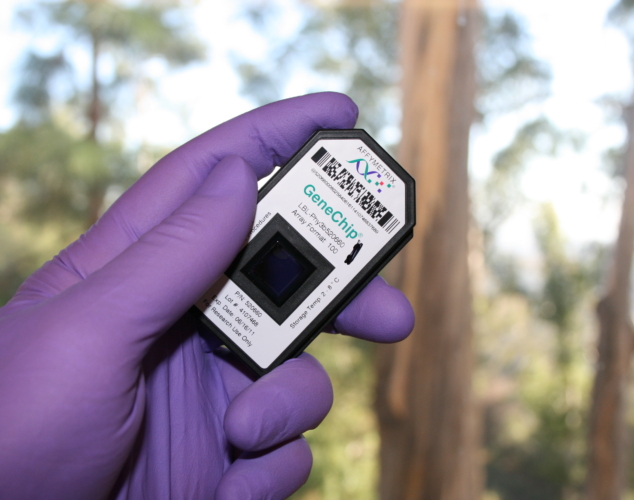When the local water management agency closes your favorite beach due to unhealthy water quality, how reliable are the tests they base their decisions on? As it turns out, those tests, as well as the standards behind them, have not been updated in decades. Now scientists from Lawrence Berkeley National Laboratory (Berkeley Lab) have developed a highly accurate, DNA-based method to detect and distinguish sources of microbial contamination in water.
Using the award-winning PhyloChip, a credit card-sized device that can detect the presence of more than 60,000 species of bacteria and archaea, the new method was found to be more sensitive than conventional methods at assessing health risks. In tests at the Russian River watershed in Northern California, the Berkeley Lab researchers found instances where their method identified potential human health risks that conventional fecal indicator tests had failed to detect. Conversely, they also found instances where the conventional tests flagged bacteria that weren’t likely risks to human health.
The research was led by Eric Dubinsky and Gary Andersen, microbial ecologists at Berkeley Lab, and was published recently in the journal Water Research in an article titled, “Microbial source tracking in impaired watersheds using PhyloChip and machine-learning classification.” Steven Butkus of the North Coast Regional Water Quality Control Board, which supported part of the research, was also a co-author.
“With the PhyloChip, in an overnight test we can get a full picture of the microorganisms in any given sample,” Dubinsky said. “Instead of targeting one organism, we’re essentially getting a fingerprint of the microbial community of potential sources in that sample. So it gives us a more comprehensive picture of what’s going on. It’s a novel way of going about source tracking.”
What local water agencies currently do is collect water samples, culture the bacteria overnight, and then check the growth level of two types of bacteria, E. coli and Enterococcus, which are presumed to be indicators of fecal contamination.
Power of the PhyloChip
However, this method doesn’t distinguish between sources. The bacteria could have come from humans, cows, ducks, sewage, or even decaying vegetation.
“These tests have been used for decades and are relatively primitive,” Dubinsky said. “Back in the 1970s when the Clean Water Act was developed and we had sewage basically flowing into our waters, these tests worked really well. Epidemiological studies showed an association of these bacteria with levels of illness of people who used the water. These bacteria don’t necessarily get you sick, but they’re found in sewage and fecal matter. That’s why they’re measured.”
As pollution from point sources—single identifiable sources such as sewage—has been cleaned up over time, the emerging concern has become what are known as nonpoint sources, or diffuse sources, throughout the watershed, such as agricultural lands.
“The picture is much more complicated now than it was back then, when the concern was really point sources,” Dubinsky added.
The PhyloChip, which was developed by Andersen and several other Berkeley Lab scientists, has been used for a number of medical, agricultural, and environmental purposes, including understanding air pollution, the ecology of coral reefs, and environmental conditions of the Gulf of Mexico after the BP oil spill. With 1 million probes, it identifies microbes based on variations of a specific gene, with no culturing needed.
“About seven years ago we started doing water quality work, and we realized the PhyloChip could provide a fundamentally new and improved method for doing source tracking,” Andersen said.
A Library of Poop
Determining the source of any particular pathogen is not a straightforward task. In most cases, a single microbe is not a definitive marker of an animal or other source. “A microbial community is complex,” Dubinsky said. “A cow may have 1,000 different organisms.”
So Andersen and Dubinsky had an idea. “We had Laleh Coté, an intern at the time and now a Lab employee, run around and basically collect poop from all sorts of animals,” said Andersen. “What we’ve done since then is develop a reference library of the microbial communities that occur in different types of poop—we have cows, horses, raccoons, humans, different types of birds, pigs, sea lions, and other animals, as well as sewage and septage. We used that library to develop a model.”
The new method takes the unknown sample and compares it against this microbial reference library. “We’ve used the PhyloChip in a way that it hasn’t been used before by using machine learning models to analyze the data in order to detect and classify sources,” Andersen said. “It’s essentially giving you a statistical probability that a microbial community came from a particular source.”
They validated their method by comparing it to about 40 other methods of microbial source tracking in a California study. “We were the only method that could detect all sources and get them right,” Dubinsky said.
If the source is an animal that is not in the reference library, their method can still point you in the right direction. “For example, in that study, one sample was a chicken,” said Dubinsky. “We hadn’t analyzed chickens, but we had geese, gulls, and pigeons. We were still able to determine that the sample was a bird.”
In extensive testing throughout the Russian River watershed, which is out of compliance with the Clean Water Act, the Berkeley Lab researchers found widespread contamination by human sources close to areas where communities rely on aging septic tanks.
They also found significant human contamination immediately after a weekend jazz festival, whereas testing by conventional methods yielded a much weaker signal after a time lag of a couple days. “Our method is more sensitive to human contamination than those fecal indicator tests are,” Dubinsky said.
Next Steps
The team is now working on characterizing the microbial community of naturally occurring E. coli and Enterococci, using Hawaii with its warm waters as a testing ground. “They can occur naturally in sediments and decaying kelp and vegetation,” Dubinsky said. “It is known that they do, but nobody has developed a test to definitively show that.”
The researchers will also be able to study whether climate affects microbial communities. “Does a Hawaiian cow look like a California cow in terms of fecal bacteria composition? That’s a good question and something we’ll be able to find out,” he said.
They are working closely with the U.S. Environmental Protection Agency (EPA), which is looking at new technologies for what it calls “next generation compliance.” Ultimately the goal is to develop their method—possibly with a downsized version of the PhyloChip—to the point where it can be universally used in any location and by non-experts.
Dubinsky says the method should also be useful with the burgeoning issue of algal blooms, to understand, for example, the processes by which they form, the microbial dynamics before and after a bloom, and specifically, whether runoff from livestock production in the Midwest is related to algal blooms in the Great Lakes, a question they’re investigating with the EPA.
# # #
Lawrence Berkeley National Laboratory addresses the world’s most urgent scientific challenges by advancing sustainable energy, protecting human health, creating new materials, and revealing the origin and fate of the universe. Founded in 1931, Berkeley Lab’s scientific expertise has been recognized with 13 Nobel prizes. The University of California manages Berkeley Lab for the U.S. Department of Energy’s Office of Science. For more, visit www.lbl.gov.
DOE’s Office of Science is the single largest supporter of basic research in the physical sciences in the United States, and is working to address some of the most pressing challenges of our time. For more information, please visit science.energy.gov.


